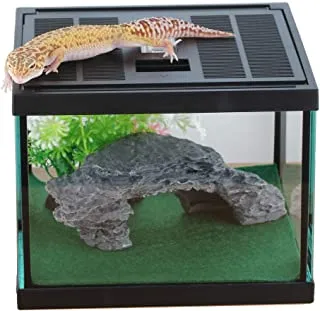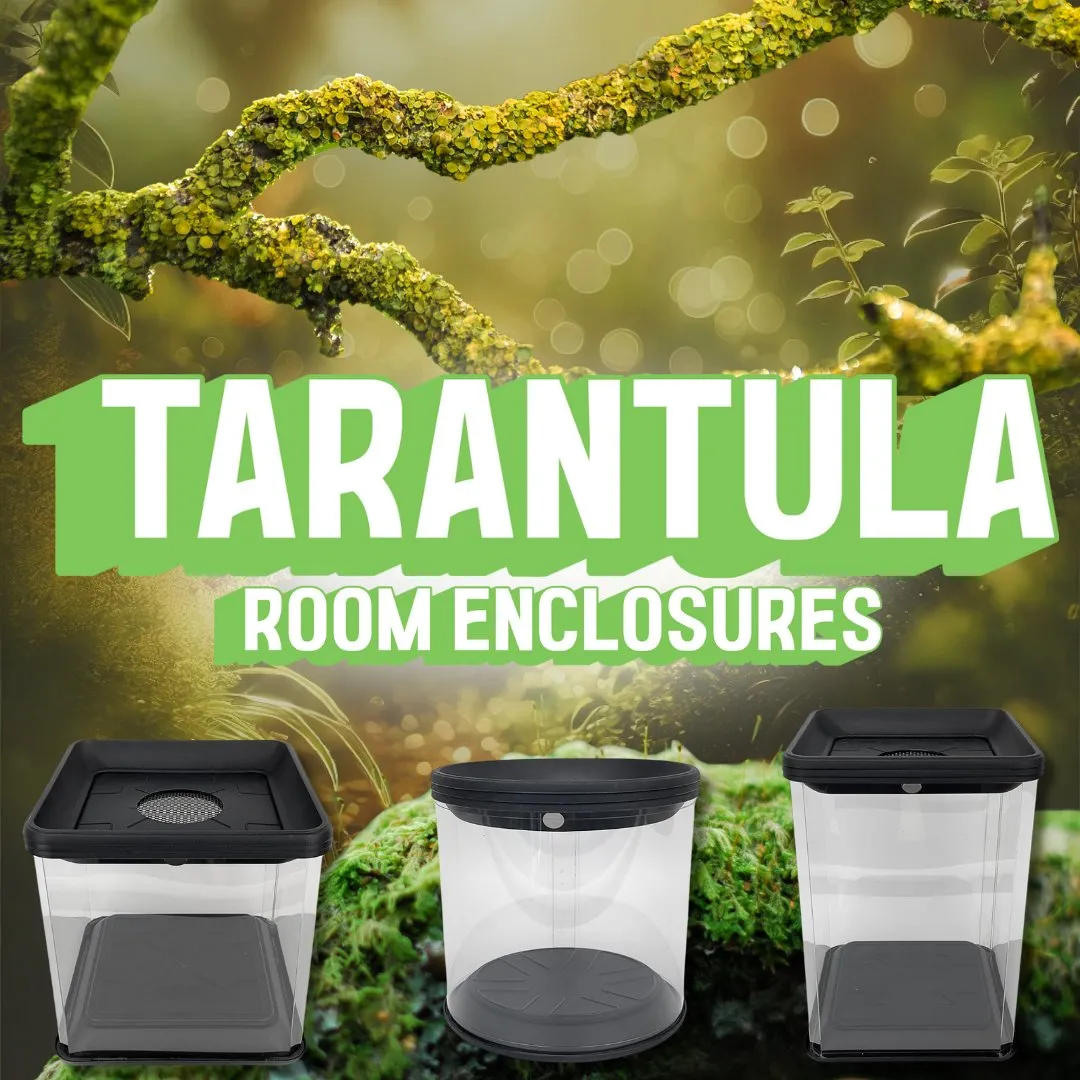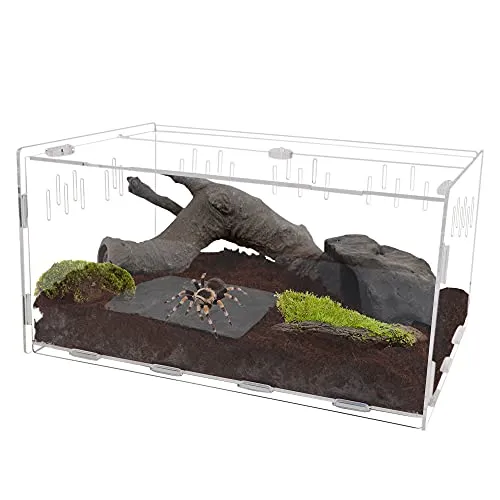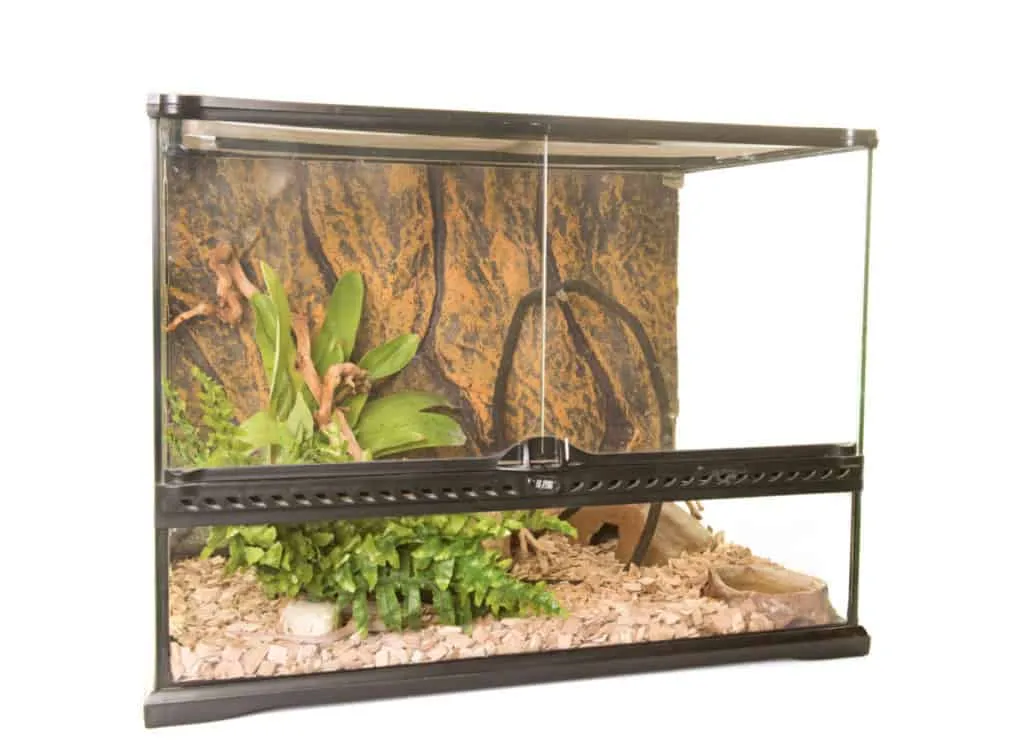Top 5 Tarantula Enclosures You Need!
Choosing the right tarantula enclosure is crucial for the health and well-being of your eight-legged friend. A proper enclosure provides a safe, secure, and stimulating environment that mimics the tarantula’s natural habitat. This guide will help you navigate the world of tarantula enclosures, providing essential information to make an informed decision. We’ll delve into the key factors to consider, from size and ventilation to substrate and overall design, ensuring your tarantula thrives. Selecting the best tarantula enclosure ensures a happy and healthy pet. We’ll also review five top-rated enclosures currently available, giving you a head start on your search. Let’s get started!
What to Consider When Choosing a Tarantula Enclosure
Before diving into specific enclosure options, it’s important to understand the key factors that influence your choice. Understanding your tarantula’s needs is the first step. These factors will guide you in selecting the perfect home for your spider. The dimensions of the enclosure are paramount. Your tarantula needs adequate space to move around, molt, and burrow. The material used for the enclosure also impacts your choice. Glass and acrylic are common materials. Ventilation is essential for preventing mold and maintaining proper humidity levels. The enclosure should have ventilation holes or mesh. Finally, the accessibility of the enclosure is also an important factor. A front-opening enclosure is easier to access for feeding and maintenance, compared to top-opening enclosures.
Size and Species Matching Enclosures

Matching the enclosure size to your tarantula species is essential for its well-being. Different species have different space requirements, based on their size and behavior. For terrestrial tarantulas, a wider enclosure is often preferred, providing ample floor space for movement and burrowing. Arboreal species, which live in trees, require taller enclosures to allow them to climb and create webs. As a general guideline, the enclosure should be at least twice the tarantula’s leg span in width and length. The height should be at least one and a half times the leg span. For spiderlings, smaller enclosures are often recommended to make it easier for them to find food. As your tarantula grows, you’ll need to upgrade to a larger enclosure. This is a good opportunity to clean and make sure the enclosure is properly maintained, preventing any bacteria buildup.
Ventilation is Key for Your Tarantula
Proper ventilation is critical for maintaining a healthy environment within your tarantula enclosure. It helps regulate humidity, prevents the buildup of harmful bacteria, and ensures adequate airflow. Insufficient ventilation can lead to mold growth, respiratory problems, and ultimately, the death of your tarantula. The design of the enclosure plays a key role in ventilation. Enclosures with cross-ventilation, where air can enter from one side and exit from another, are ideal. Mesh tops or side vents can also provide adequate airflow. It’s also important to monitor humidity levels. Overly humid conditions can promote mold growth. Using a hygrometer will help you monitor humidity levels. If humidity is too high, increase ventilation. If it is too low, provide more humidity.
Substrate Selection for Tarantulas
The substrate is the bedding material at the bottom of your tarantula’s enclosure. It serves several purposes, including providing a surface for the tarantula to walk on, absorbing waste, and helping to maintain humidity. The substrate should be chosen carefully to ensure it is safe, non-toxic, and suitable for the species. Popular choices include coco fiber, peat moss, and vermiculite. Coco fiber is an excellent option, as it retains moisture well. Peat moss is also a good choice. Vermiculite is often used to increase humidity. Avoid substrates like wood shavings, which can be harmful to tarantulas. The substrate should be deep enough to allow your tarantula to burrow, especially for terrestrial species. Regularly replace the substrate to prevent the buildup of waste and maintain a healthy environment. Maintaining cleanliness is key to preventing any health issues.
Top 5 Tarantula Enclosures Review

Now, let’s delve into some top-rated tarantula enclosures, each with its own unique features and benefits. These enclosures have been chosen based on their quality, design, and overall suitability for tarantulas. Remember to always consider your tarantula’s specific species and requirements when choosing an enclosure. Safety and ease of access are paramount. These reviews will give you a good starting point, helping you find the perfect home for your spider. We’ll highlight the pros and cons of each enclosure, helping you make an informed decision.
Enclosure 1 Review
Enclosure 1 is a popular choice for beginners and experienced keepers alike. This enclosure typically features a clear acrylic design, providing excellent visibility of your tarantula. It often includes a secure lid with ventilation holes, ensuring proper airflow while preventing escapes. The size is well-suited for a range of tarantula species, from juveniles to adults. The enclosure’s design makes it easy to clean and maintain. Some models include built-in features like feeding ledges or pre-drilled holes for accessories. The clear acrylic material also provides a clean look for your home. Consider the size and the species you have before choosing this enclosure.
Enclosure 2 Review
Enclosure 2 offers a more specialized design, often targeted towards arboreal tarantulas. Its tall, vertical structure provides ample space for climbing and web-building. The enclosure typically features a secure front-opening door, making feeding and maintenance a breeze. The design includes a mesh top for excellent ventilation, essential for maintaining the correct humidity levels for arboreal species. The enclosure’s material is often high-quality glass or acrylic, offering clear visibility. This type of enclosure is ideal for species like the Pinktoe tarantula, or other tarantulas that enjoy climbing and exploring higher spaces. The design keeps the tarantula contained and safe from escape.
Enclosure 3 Review

Enclosure 3 stands out for its durability and ease of use. Constructed from sturdy materials, this enclosure is built to last. It often features a secure lid with locking mechanisms, preventing accidental escapes. The design incorporates ample ventilation, usually through side vents and a mesh top, ensuring a healthy environment for your tarantula. The enclosure’s transparent walls offer excellent visibility, allowing you to observe your tarantula’s behavior. This option is suitable for a variety of tarantula species and is particularly well-suited for those who prioritize a secure and long-lasting enclosure. This is a good choice for any pet owner.
Enclosure 4 Review
Enclosure 4 provides a balance of affordability and functionality. This option is an excellent choice for beginner tarantula keepers. The enclosure typically features a clear plastic or acrylic construction with a secure lid and adequate ventilation. Its design prioritizes ease of use, making it simple to clean and maintain. The enclosure offers good visibility, allowing you to observe your tarantula. While it may not have all the bells and whistles of more expensive enclosures, it offers a safe and suitable home for your spider. The size is appropriate for a variety of tarantula species.
Enclosure 5 Review
Enclosure 5 focuses on providing a naturalistic environment. It often incorporates features like built-in backgrounds, providing a more immersive experience for your tarantula. The enclosure typically includes ample ventilation and secure closures. The design incorporates features that help maintain the right humidity levels. This type of enclosure is especially well-suited for tarantulas that require specific humidity levels. The material is usually sturdy and long-lasting, providing a safe and attractive home for your tarantula. The realistic backdrop provides a more enriching environment for your pet.
Conclusion

Choosing the right tarantula enclosure is a critical decision that impacts your pet’s well-being. By considering factors like size, ventilation, and substrate, you can create a safe and enriching environment for your tarantula. The enclosures reviewed offer a range of options, from beginner-friendly choices to those that prioritize naturalistic environments. Remember to research the specific needs of your tarantula species. By selecting the right enclosure, you’re investing in your tarantula’s health and happiness, and your overall enjoyment of this fascinating hobby. Provide the best home possible, and enjoy your tarantula!
